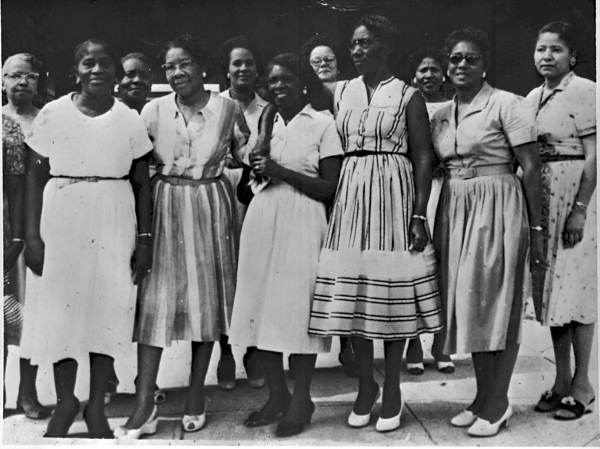Beginning in the 1920s, the National Association for the Advancement of Colored People (NAACP) began to focus on equalization of resources in Black and white schools,[1] reasoning that if they focused on leveling the resources in the two public school systems, it would force the white schools to desegregate because of the huge financial burden of supporting two school systems. In Florida, the NAACP and the Florida State Teachers’ Association – the state’s largest Black teachers’ union – brought salary equalization cases in multiple county courts, but they often faced backlash from white school boards and teachers:
- In Escambia County in 1940, a lawsuit was eventually dropped because the school board offered to settle and equalize salaries over three years. The school board then delayed implementing the agreement and had to be taken back to court.
- In Marion County, a lawsuit was also filed, and there were reports that the school board intimidated teachers by hinting that their contracts would not be renewed because of their involvement.
- In Dade County, the school board justified differential pay by arguing that white teachers lived in neighborhoods with higher costs of living than Black teachers and that white teachers were more qualified than Black teachers. Black teachers were administered a surprise test to see if they really “deserved” equal salaries.
- In Palm Beach County, the Florida Education Association, then an all-white teachers’ union, opposed an equalization suit because they feared increased salaries for Black teachers would result in pay cuts for white teachers.
Broadly, the teachers’ salary equalization campaign was successful, as the NAACP won 27 of the 31 cases brought in the South. The fight for salary equalization also galvanized Black Americans, especially women, and connected them to the civil rights movement. As a result, Black teachers’ salaries in the South rose overall, reaching 85 percent of white teacher salaries by 1950.[2] Specifically in Florida, though the average annual salary for Black teachers increased by $158 between the 1929-1930 and 1939-1940 school years, it still only reached half of the average annual salary of white teachers. Moreover, using this type of litigation to end segregation was slow and costly because it could only be undertaken one school district at a time.
References:
[1] Kirk, John A. “The NAACP Campaign for Teachers’ Salary Equalization: African American Women Educators and The Early Civil Rights Struggle.” The Journal of African American History, vol. 94, no. 4, 2009, pp. 529–52.
[2] Kirk, John A. “The NAACP Campaign for Teachers’ Salary Equalization: African American Women Educators and The Early Civil Rights Struggle.” The Journal of African American History, vol. 94, no. 4, 2009, pp. 529–52.
